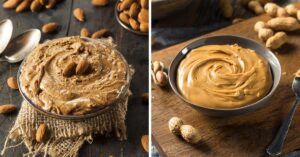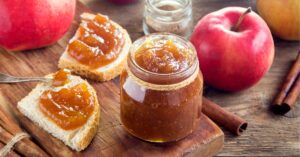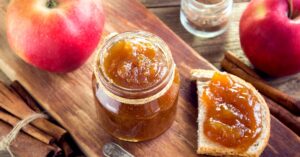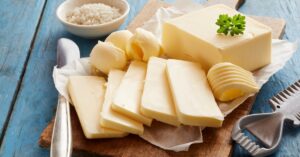As a foodie, home cook, or baker, you may have heard of ghee. But what is ghee, and why should you use it?
Ghee has been part of Indian cuisine for centuries. It’s even mentioned in ancient Ayurvedic texts!
It’s as essential to South Asian cooking as butter is to North American dishes.

It’s a type of clarified butter that can make your meals healthier and more flavorful.
And it does all that without triggering any lactose allergies you might have.
In this post, you’ll learn about the unique properties of ghee that make it awesome and delicious.
We’ll also discuss its taste, how it’s made, and more.
What Is Ghee?
I’ve already mentioned that ghee is a type of clarified butter, but what does that mean exactly?
Oxford describes clarified butter as “butter from which water and milk solids have been removed.”
In the case of ghee, the butter is first simmered, then strained.
That results in ghee’s unique flavor, long shelf-life, and high smoke point. It also doesn’t have to be refrigerated.
Today, you can find ghee at most chain retailers and Asian markets. It’s a staple of Asian cuisine, specifically Indian food.
However, Indians also valued it for its medicinal properties.
According to Ayurvedic medicine, ghee is great for digestion.
It’s also a natural anti-inflammatory with therapeutic properties.
What Does Ghee Taste Like?
Ghee is a type of butter, so its taste is somewhat buttery.
However, because ghee is browned, its taste is more complex and has more depth than plain butter.
Most people describe it as nutty and toasted.
Others claim it tastes almost like caramel, toffee, or butterscotch. (Though it doesn’t have their innate sweetness.)
The discrepancies in taste aren’t solely based on each person’s tastebuds, either.
Different ghee brands taste different depending on the type of milk used to make them.
Higher-quality milk produces better-tasting ghee.
Lower-quality milk makes ghee that may not have the richest possible flavor.
Also, ghee made from cow’s milk will taste different from ghee made with milk from another animal.
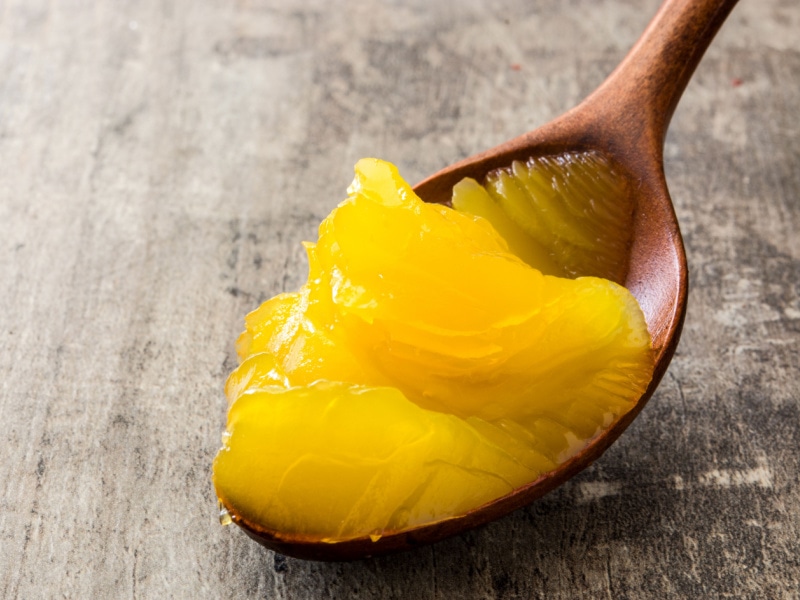
How Is Ghee Made?
I touched on this already, but some people might want to make their own ghee.
If you’re interested in doing that, the following is a brief overview of the steps:
- Start by boiling butter over low heat. The liquid and solid parts should separate after about 5 to 10 minutes.
- Continue to heat the butter until the liquids evaporate. At that point, increase the heat to medium. The solids gathered in the pan should begin to brown.
- Skim off any milk solids that accumulate on top of the browning ghee. Discard them.
- Remove the ghee from the heat. Allow it to cool from hot to warm.
- Strain the ghee. You can do this with a sieve or a cheesecloth. Discard any remaining milk solids.
- Transfer the ghee to a storage container. A small Mason jar or a clean glass jelly jar, for example.
The above steps are for making ghee at home.
However, manufacturers follow a similar process when they make ghee. (Albeit on a much larger scale.)
Primarily, manufacturers use cow’s milk to make their ghee.
If you’re making it at home, you can use butter made with any animal’s milk.
Ghee vs. Butter (What’s the Difference?)
First and foremost, the two taste different. Butter tastes like butter, while ghee is nuttier and less sweet.
Their textures are also vastly different at room temperature and in the fridge.
If refrigerated, butter is hard and solid. Ghee, on the other hand, becomes firm but is granular.
At room temperature, both are solid, but the mouthfeel of each is distinct.
Butter is smooth and creamy; ghee is slightly grainy.
Unlike butter, ghee’s texture and nutty, not-sweet taste make it unsuitable for baking.
Ghee is better for high-heat cooking methods, as its smoke point is higher than butter.
(Ghee’s smoke point is 485 degrees Fahrenheit, and butter’s is 350 degrees.)
Storage methods for both are also different. Ghee is shelf-stable and doesn’t require refrigeration.
Butter, though, is best stored in the fridge.
And for my lactose-intolerant readers, ghee doesn’t contain lactose. Nutritionally speaking, though, the two are similar.
Though ghee is slightly higher in calories and fat.
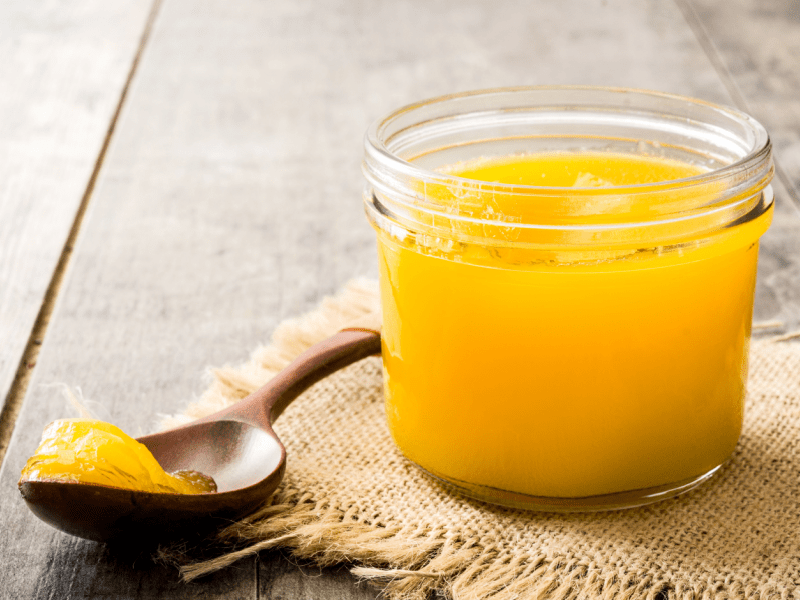
How to Use Ghee
As I mentioned, ghee has a higher smoke point than butter.
That makes it ideal for high-heat cooking. Use it when sauteing or frying to avoid splatter burns and prevent your food from burning.
You’ll see it in the ingredient list for many Indian and other Asian recipes.
However, you can use it practically every way you use butter or another cooking oil. (I don’t recommend it for baking, though.)
Here are just a few of the common ways you could use ghee:
- Melt it and use it as a topping for veggies, popcorn, or toast.
- Add it to already-cooked dishes like rice or couscous.
- Use it for deep-frying various foods.
- Brush it over veggies and meats before adding them to the grill.
If you’re a ‘butter in coffee’ person, you can even use ghee for that!
Where to Buy Ghee
You can find ghee practically anywhere you can find butter.
This wasn’t the case a decade or so ago, but the ingredient is now pretty popular worldwide.
Just don’t expect to find it in the dairy cooler. Instead, look for ghee in the baking aisle of your local supermarket.
You can also find it in most Asian markets and online.






